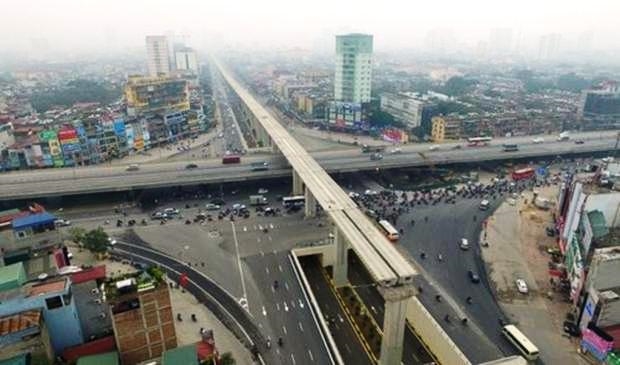 Society
Society

Hà Nội’s transportation system will get a major facelift by 2030 with a total of 18 bridges across Hồng River and eight city railway routes, according to a new master transport plan unveiled by the city authority on Saturday.
 |
| A view of Hà Nội. Hà Nội’s transportation system will get a major facelift by 2030 with a total of 18 bridges across Hồng River and eight city railway routes. — Photo anninhthudo.vn |
HÀ NỘI – Hà Nội’s transportation system will get a major facelift by 2030 with a total of 18 bridges across Hồng River and eight city railway routes, according to a new master transport plan unveiled by the city authority on Saturday.
Under Hà Nội’s Transportation Plan for 2030, with a vision towards 2050, developing public transportation is named the top priority in order to accommodate urbanisation and a booming population, which is expected to reach 7.9 million in 2020 and 9.2 million in 2030.
Hà Nội will build six new inner city railway routes in addition to the two routes of Cát Linh – Hà Đông and Nhổn – Hà Nội Railway Station, which are currently under construction. The network is expected to cover a total length of 300km.
Buses will be another major means of public transport. In addition to developing regular bus services, by 2030, Hà Nội aims to have eight Bus Rapid Transit (BRT) routes, a high-quality bus transit system that delivers fast and comfortable services. The first BRT route connecting Kim Mã and Yên Nghĩa is already being built and expected to start operations at the end of this year.
Inter-provincial coach stations will gradually be moved to the outskirts of the city, beyond Ring Road 3, to ease traffic flow in downtown. They will be connected to downtown via the public transportation system. The current stations, which are located inside the city, like Gia Lâm, Giáp Bát and Mỹ Đình, will be renovated and upgraded to serve inner city travel, according to the plan.
Vũ Văn Viện, director of Hà Nội’s Department of Transport, said these projects aim to increase the share of public transport in the capital from the current low figure of about 10 per cent to 30-35 per cent by 2020. The figure is expected to reach 50 per cent by 2030, and 70 per cent after 2030.
This is in line with a plan announced in June by the city’s leaders, which set a target of limiting the number of individual vehicles by 2020, with a further goal of removing motorbikes from the city’s downtown by 2025 in order to tackle the chronic problems of traffic congestion and accidents.
Under the new master plan, Hà Nội will also focus on completing the system of ring roads and elevated roads to ensure better connectivity with inner city roads.
Travelling across the rivers of Hồng, Đuống, Đáy and Đà will be made easier with more bridges. In particular, 11 more bridges and an underwater tunnel crossing Hồng River are being planned, in addition to the current seven bridges. Another five rail bridges will also be constructed across the river, including one to replace the old railway route of Long Biên Bridge. The new bridge and route will be built 75m upstream of Long Biên Bridge.
The plan also aims to create better connections between Hà Nội and other provinces through new highways, such as the Hà Nội – HCM City Highway, Hà Nội – Hòa Bình Highway, Nội Bài – Hạ Long Highway, Northeast – National Highway 5 and two inter-regional belts.
The master plan is expected to cost a total of VNĐ1.2 quadrillion (US$53.8 billion), which will come from various sources like Official Development Assistance (ODA), the national budget and commercial loans.
Speaking at the ceremony to announce the plan on Saturday, Deputy Prime Minister Trịnh Đình Dũng underscored its significance to not only the city’s socio-economic development, but also the Hồng River Delta and the whole northern economic zone.
He said the Government would support Hà Nội in carrying out the plan and create favourable policies and conditions for Hà Nội to develop rapidly and effectively.
He urged the municipal People’s Committee of Hà Nội to set forth detailed plans, including building appropriate policies and financial plans suitable for each period, and mobilising funds from various sources such as enterprises, the national budget or ODA.. — VNS